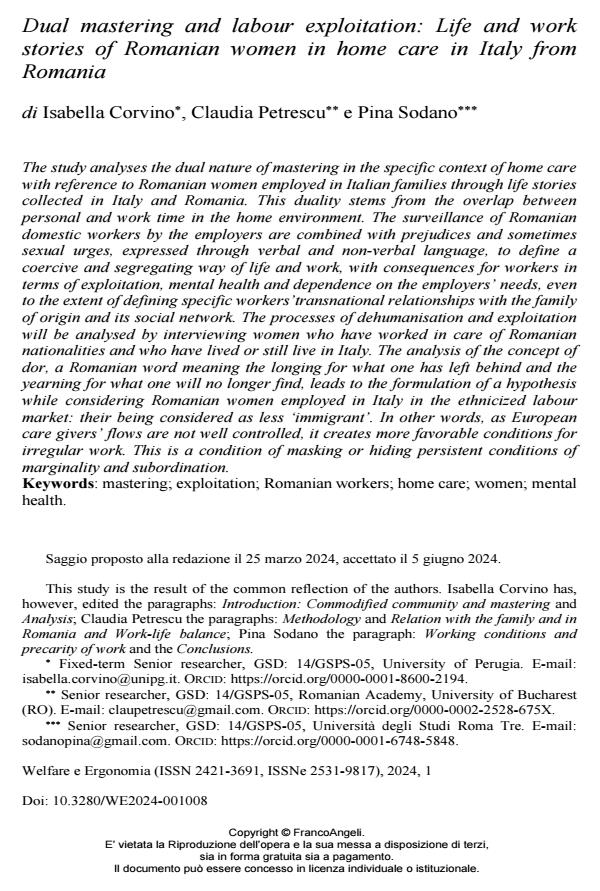Dual mastering and labour exploitation: Life and work stories of Romanian women in home care in Italy from Romania
Journal title WELFARE E ERGONOMIA
Author/s Isabella Corvino, Claudia Petrescu, Pina Sodano
Publishing Year 2024 Issue 2024/1
Language English Pages 12 P. 103-114 File size 245 KB
DOI 10.3280/WE2024-001008
DOI is like a bar code for intellectual property: to have more infomation
click here
Below, you can see the article first page
If you want to buy this article in PDF format, you can do it, following the instructions to buy download credits

FrancoAngeli is member of Publishers International Linking Association, Inc (PILA), a not-for-profit association which run the CrossRef service enabling links to and from online scholarly content.
The study analyses the dual nature of mastering in the specific context of home care with reference to Romanian women employed in Italian families through life stories collected in Italy and Romania. This duality stems from the overlap between personal and work time in the home environment. The surveillance of Romanian domestic workers by the employers are combined with prejudices and sometimes sexual urges, expressed through verbal and non-verbal language, to define a coercive and segregating way of life and work, with consequences for workers in terms of exploitation, mental health and dependence on the employers’ needs, even to the extent of defining specific workers’transnational relationships with the family of origin and its social network. The processes of dehumanisation and exploitation will be analysed by interviewing women who have worked in care of Romanian nationalities and who have lived or still live in Italy. The analysis of the concept of dor, a Romanian word meaning the longing for what one has left behind and the yearning for what one will no longer find, leads to the formulation of a hypothesis while considering Romanian women employed in Italy in the ethnicized labour market: their being considered as less ‘immigrant’. In other words, as European care givers’ flows are not well controlled, it creates more favorable conditions for irregular work. This is a condition of masking or hiding persistent conditions of marginality and subordination.
Keywords: mastering; exploitation; Romanian workers; home care; women; mental health.
Isabella Corvino, Claudia Petrescu, Pina Sodano, Dual mastering and labour exploitation: Life and work stories of Romanian women in home care in Italy from Romania in "WELFARE E ERGONOMIA" 1/2024, pp 103-114, DOI: 10.3280/WE2024-001008